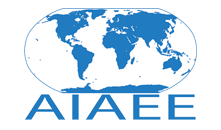Keywords
Africa, Agricultural Extension, British Colonies, Exploitation, Pluralistic Approaches
Abstract
Agricultural extension services the world over have been instrumental in ensuring agriculturists stay abreast of new developments to improve their productivity and economic livelihoods. This historical study describes the origin and practice of agricultural extension in the former British colonies of Zimbabwe, Uganda, and Kenya before their independence and during the decades afterward, and identifies some of the challenges impacting extension services in these countries. Over time, in a bid to improve their agricultural sectors, these countries employed a number of approaches to providing extension/advisory services. Some methods, however, were coercive and little more than the enforcement of laws and customs prejudicial to the nations’ Black farmers. This often resulted in cruel treatment, exploitation, and oppression of these farmers, especially during the colonial era. In the post-colonial era, no single approach to extension delivery has been without shortcomings (Davis, 2008). To that end, a pluralistic paradigm has shown promise in mitigating the limitations of any single approach. Additional research should be conducted to determine the longstanding impact of using chiefs and other law enforcers as extension agents on individuals’ present-day perceptions about extension and its potential for meeting the needs of smallholder, resource-poor farmers in the future.
Rights Statements
This Item is protected by copyright and/or related rights. You are free to use this Item in any way that is permitted by the copyright and related rights legislation that applies to your use. For other uses you need to obtain permission from the rights-holder(s).
Recommended Citation
Mukembo, S. C.,
&
Edwards, C. M.
(2015).
Agricultural Extension in Sub-Saharan Africa During and After Its Colonial Era: The Case of Zimbabwe, Uganda, and Kenya.
Journal of International Agricultural and Extension Education, 22(3), 50-68.
DOI: https://doi.org/10.5191/jiaee.2015.22304



